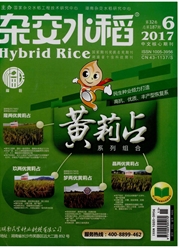

 中文摘要:
中文摘要:
借助叶绿素荧光诱导动力学分析技术,研究了低强度中波紫外线(UV—B,1.6kJ·m^2·d^-1)辐射对两优培九齐穗灌浆期功能叶片叶绿素含量、光系统Ⅱ(PSⅡ)原初光能转化、反应中心能量分配及受体侧的电子传递过程等光合及荧光特性的影响。结果表明:在低强度UV—B辐射下,齐穗期和灌浆期的功能叶片叶绿素含量增加,有利于PSⅡ对光能的吸收和传递;PSⅡ反应中心吸收的能量增多,捕获的能量及进入电子传递链的能量也相应增加,但热耗散与对照相比上升不明显;活性反应中心的数量增多;PSⅡ受体侧有效能量传递效率、原初光能转化效率(Fv/Fm)和潜在活性(Fv/Fo)都有所提高,从而提高了叶片光合机构PSⅡ(包括供体侧和受体侧以及反应中心)的性能。
 英文摘要:
英文摘要:
The study was conducted to determine the effects of low intensity of UV-B ( 1.6 kJ · m ^-2 . d ^-1 ) radiation on photosynthetic and fluorescent parameters of functional leaves of Liangyou Peijiu in the heading and filling stage based on the kinetics analysis of chlorophyll fluorescence induction. It focused on analyzing the chlorophyll content, the primary light energy conversion, energy distribution of the reaction center and electron transport of the acceptor side of photosystem Ⅱ ( PSⅡ ). The results showed that under low-intensity UV-B radiation, the chloro- phyll content in functional leaves increased in the full heading and grain filling stage, resulting in a promotion of the absorption and transmission of light energy by PS Ⅱ. The absorption by the reaction center of PS I1 increased and the trapped energy and the electron transport increased correspondingly, but the dissipated energy increased insignificantly comparing with the control. The number of active PS Ⅱ reaction centers also increased. The transfer efficiency of acceptor side, Fv/Fm and Fv/Fo were all improved to some extent, thus improving the performance of PSⅡ (including the sides of aeceptor and donor and the reaction centers ) .
 同期刊论文项目
同期刊论文项目
 同项目期刊论文
同项目期刊论文
 期刊信息
期刊信息
